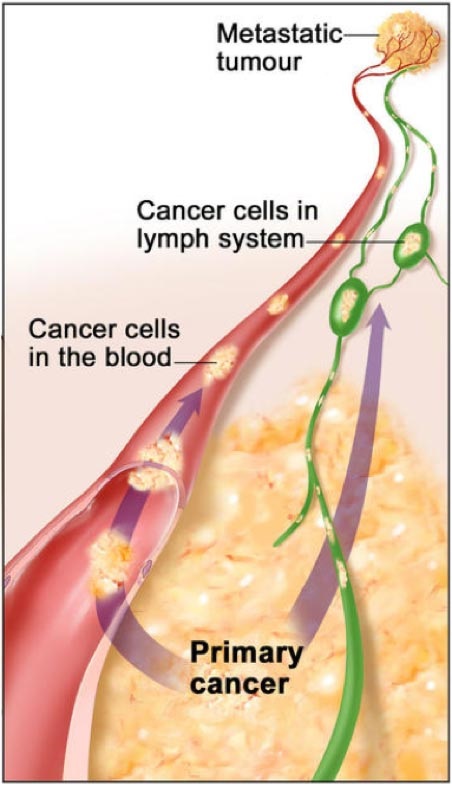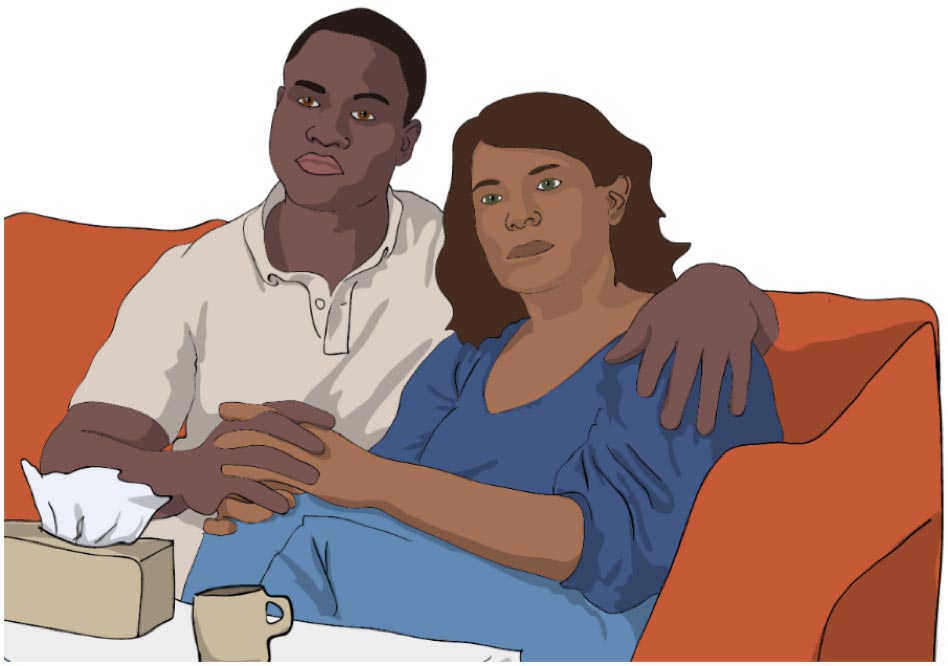- Home
- What is metastatic cancer?

If the cancer comes back or won't go away


What is metastatic cancer?
Everyone’s journey with cancer is different and cancer effects each person’s body differently.
Some people might hear from their doctor that cancer has spread from where it started to another part of their body. This is called metastatic cancer. Cancer can spread when a bit of it breaks away, moves to another part of the body and grows there. It can spread to other parts by getting into the blood or the lymphatic system or by growing into nearby organs.
Metastatic cancer is sometimes known as secondary or advanced cancer.
When cancer spreads to a new area, it is still named after the part of the body where it started. For example, if you have lung cancer and it spreads to a bone in your body, it is called metastatic lung cancer, not bone cancer. The cancer in your lung is called a primary cancer and the cancer in your bone is called a secondary cancer or bone metastasis.
Some people as told that cancer has already spread to other parts of their body, when they are first diagnosed with cancer. The cancer might be found in the bone first, but tests show it was from the lung. This will be called lung cancer that has spread or ‘metastasised’ to the bone.
How it affects you
Symptoms and signs of metastatic cancer depend on where the cancer is. Sometimes people don’t know they have cancer until after the tests show that the cancer has already spread to other parts of the body.
Symptoms of metastatic cancer can include:
- feeling tired or sick
- trouble sleeping
- losing weight without trying
- general aches and pains in your body
- night sweats and fevers.
Depending on where the cancer is, people may develop pain in that area or may have a new swelling or a lump. They might also have symptoms relating to the organ that is affected. For example, they may have trouble with their eyes if the cancer has spread to their brain or trouble breathing if the cancer has spread to their lungs.
There might also be sore areas, weakened bones or problems with how the body makes blood.
There are also side effects from cancer treatment, and problems that could be from other illnesses.
If you feel worried that the cancer has spread, and don’t know what is going to happen, yarn with your doctor, nurse or Aboriginal and/or Torres Strait Islander health worker.
Speaking up straight away
It is important to tell your doctor if you have any feelings or problems with your body that are new, or that you are worried about. Yarning about your symptoms with your doctor means your medical team can find ways to help you feel better.
Treatment
Metastatic cancer is usually not curable, which means that it cannot be removed from your body. However, many people will still have treatment, which can help them live longer and feel better.
Get all the information you can so you can decide what is best for you and include any traditional healing, bush medicines or cultural practices that are important to you.

Things that help
After a diagnosis of metastatic cancer, you will be closely looked after by a team of healthcare workers. The doctors will arrange follow-up visits and appointments with other healthcare professionals. This might mean yarning with more than one doctor, having blood tests and doing tests on parts of your body.
- There might be ways to help with symptoms, to treat the cancer and look after your mind and spirit. You can include traditional healing, bush medicines and cultural practices too.
- The symptoms and side effects depend on the type of cancer and the location. You might get tablets or medicine to help with pain and other symptoms. You may also need help from another health worker or doctor. For example, some people may need radiotherapy to help with pain, visits with a counsellor or psychologist to manage stress and emotions or physical therapy to make your body stronger.
- Other healthcare workers can help with your nutrition, exercise, mental health and other support for you and your family.
- Talk to people you trust about how you feel. You could talk to family and friends, Elders, your doctor, nurse and your Aboriginal and/or Torres Strait Islander health worker. Yarn through the treatment options to help you decide what is best for you.
- Having a healthy lifestyle is another thing that helps. Do things that make you feel good, help heal, reduce fear and stress, and have a strong spirit.
- Some people who have had cancer that has spread or come back, have some idea about what might happen. They know more about what questions to ask, how you might feel and what could help best. It is a good idea to yarn with others who have been through the same experience.
- Because you are the one having the treatment, it is important you understand what it is for and why you’re having that treatment. Getting as much information as you can from your doctor and other people who have been through cancer treatment can help you decide what is best for you. Take a someone with you to appointments so they can help gather the information you need and help you work through it.
- You can ask questions to your doctor, nurse, or your Aboriginal and/or Torres Strait Islander health worker.
Life with and after cancer
FIND OUT MORE
Where can I get help and support?
FIND OUT MORE

